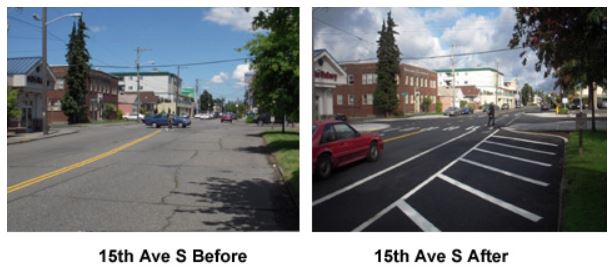
Complete Streets
The Complete Streets Program was designed to support the efforts of municipalities to build infrastructure which would give members of the public safe travel routes, whether individuals were walking, riding bicycles, taking public transit or traveling in motor vehicles. The program also has a strong emphasis on accessibility, allowing people of all ages and abilities to use the Commonwealth’s roadways.
Within this program, municipalities are required to pass a Complete Streets Policy which directs transportation planners and engineers to design and operate the right of way. Municipal partners must create a Compete Streets Prioritization Plan. The Program commits one-third of funding to communities whose household income is below the state median. Incorporation of these projects has several benefits to communities and their local transit systems including, system efficiency, increased livability for residents, a larger number of transport options, improved community health, environmental benefits as well as the potential for economic development.
As of 2018, the program is responsible for over $23 million in construction awards with an additional $4.5 million awarded to municipalities, which provides financial support for the technical costs of creating Complete Streets Prioritization Plans. There are currently 207 municipalities registered within the program, each of which is eligible for up to $50,000 in technical assistance and an additional $400,000 in construction grants.
A small example such as Prospect Street in Topsfield made use of funds to install more visible stop signs, paint new crosswalks and increase sidewalk coverage between local elementary and middle schools and adjacent suburbs. Other projects, however, require more complex solutions such as Causeway Street in Boston which acts as the entrance to the TD Garden Arena. This project required complete reengineering of roadways and sidewalks to feature centrally located bicycle lanes, increased sidewalk and crossing space, and signaling improvements.
Read additional stories from this state:


